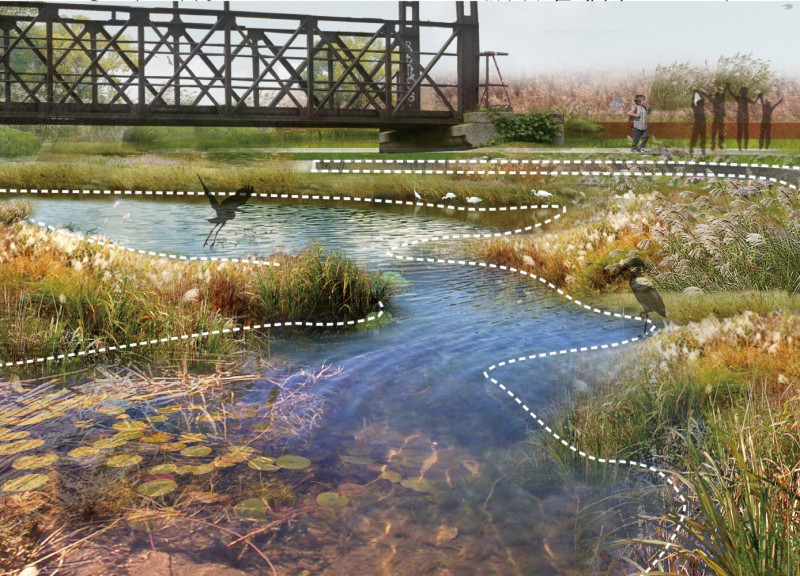5 key facts about this project
The project centered around the Navigli canal system in Milan seeks to respond to the challenge of urban noise while reconnecting the city with its natural surroundings. Set in an area rich with history, the design aims to transform an 8 km segment of the canal into a peaceful ecological waterfront. The focus is on creating spaces that promote tranquility and enhance public interaction, prioritizing the sounds of nature over the disruptive noise of the city.
Auditory Segmentation
A key feature of the design is the segmentation of the canal into four distinct auditory experiences: "the sound of vehicles," "the sound of history," "the sound of people," and "the sound of water." Each segment reflects different aspects of Milan's urban life, encouraging a shift from the often overwhelming sounds of the city to the more soothing tones of nature. By creating these defined auditory spaces, the plan invites residents and visitors to engage more deeply with the surrounding environment.
Ecological Noise Park
At the heart of the initiative is the ecological noise park, which aims to provide a calming environment through enhanced natural sounds such as wind, birds, and flowing water. Apple tree arrays will not only serve as noise barriers but also contribute pleasant wind sounds to the area. This blending of design and ecological considerations reinforces the connection between urban living and the natural world, making the park a place of refuge amid city life.
Biodiversity and Plant Selection
The project emphasizes the importance of biodiversity through the careful selection of original trees with varied heights and densities. These trees are intended to create habitats for local birds, enriching the auditory experience for visitors. This thoughtful approach to planting enhances the ecological integrity of the park while also introducing diverse visual elements, making the environment more engaging and vibrant.
Waterfront Interaction
The design encourages public interaction by creating waterfront spaces that allow visitors to experience the calming effects of flowing water. Such areas are designed for relaxation and social gathering, fostering a sense of community among residents and visitors alike. By strengthening the connection between people and water, the project emphasizes the importance of nature in urban settings, reminding us of the quiet moments that can be found even in a bustling city.
This initiative highlights how the relationship between sound, nature, and urban life can be thoughtfully managed. It offers valuable insights into how public spaces can be designed to promote peace, engagement, and a deeper appreciation of the natural environment within the heart of Milan.






















































